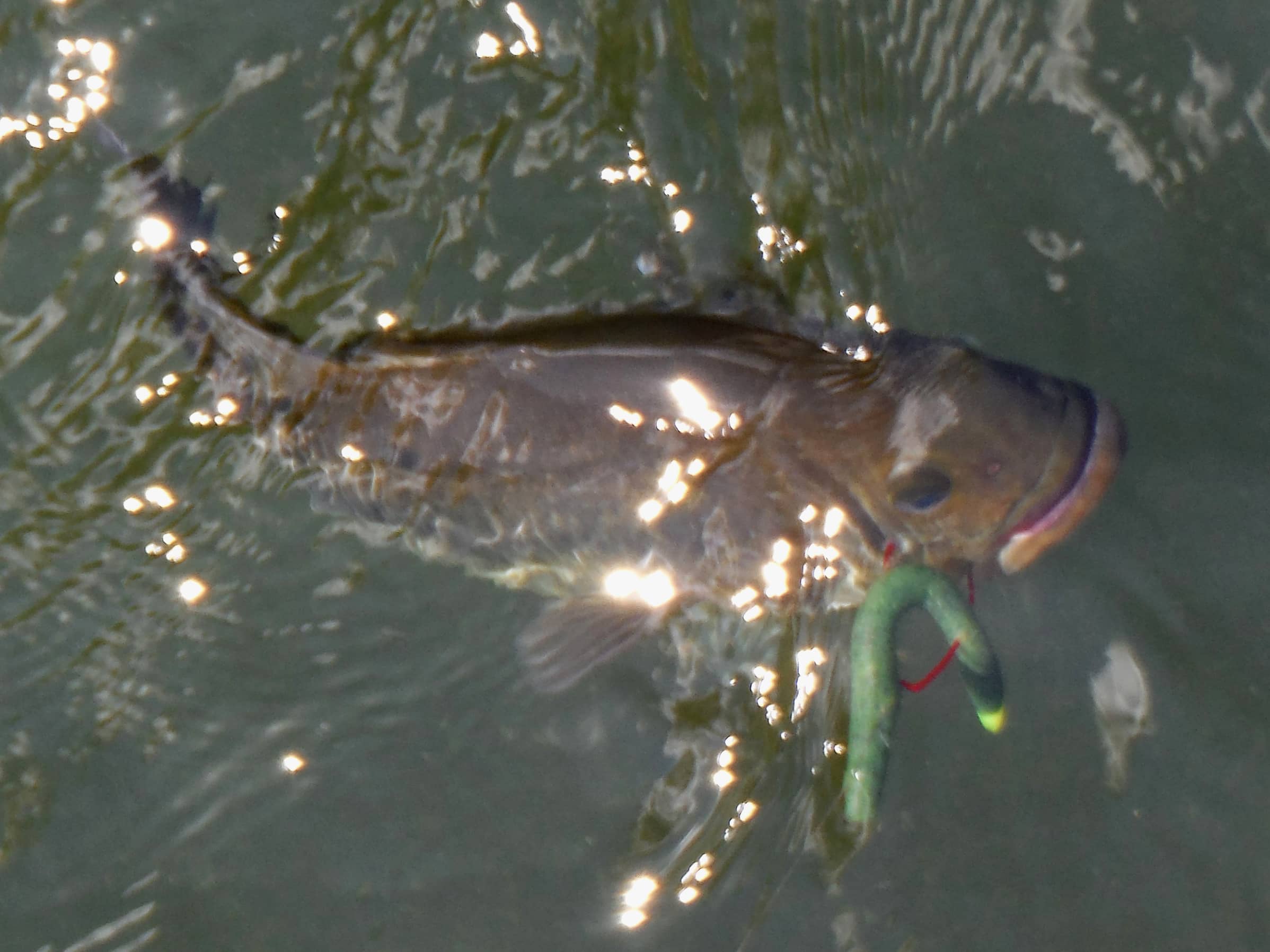
Stick to the Point. A quality largemouth bass comes to boat, thanks to a Texas-rigged soft plastic stick. Simonson Photo.
By Nick Simonson
The warming waters of spring herald a movement for largemouth bass into the shallows of the lakes and reservoirs in which they reside.
Often, those dark bottoms releasing the first green-and-red curls of lily pads or sandy stretches with verdant spikes of emergent reeds and those locations’ elevated temperatures are the first sites that largemouth stake out as the spawning season sets up in the coming weeks. While getting in casting range without spooking these fish can sometimes be a challenge, especially when the water is clear, one bait shines in setting off the feeding instinct of these fish with other things on their minds.
Since its proliferation across the bass fishing sphere more than two decades ago, the soft plastic stick, pioneered by the near-namesake of the lure, Gary Yamamoto, has been a go-to for largemouth bass. With a relatively heavy weight, the bait is easy to cast, and the effort put into working it is almost nil; simply let it fall to trigger the interest of the strong-sighted bass lurking nearby. Whether it’s the original Yamamoto Senko, the Yum! Dinger, Bass Pro Shop’s Stik-O, or one of a hundred other options, including garage pours sold in bulk bags on eBay, soft plastic sticks should be considered a staple for spring bass fishing, and really any openwater efforts for lunkers. In the chillier and clearer waters of the spawning season, however, is where they really shine.
What makes a stick so special is the subtle undulation each end makes as the lure descends through the water column, especially when it is wacky rigged by running a circle hook through the middle of the bait or utilizing a plastic O-ring to hold the hook in place adjacent to it. Texas-rigging a soft plastic stick works well too and allows it to be fished more traditionally like a tube or worm. One word of caution though, weighting a soft plastic stick with a bullet sinker will quickly kill its fish catching action which comes on the slow fall it makes through the water. So, fish them au naturale to get the most out of soft plastic sticks.
Cast the bait near shore, along emerging vegetation, or by structure and let it fall to the bottom. After a five-count, simply lift the rod tip, reel up the slack and let it fall back down again on a semi-taut line. All the while, be expecting to feel a slight snap or a prolonged pull, which are signs that a fish has picked up the bait or has begun swimming off with it. For the standard four- and five-inch sticks, all it takes is the quick inhale of a largemouth bass to suck the lure in, as more than a half-gallon of water can be pulled through the fish’s mouth for feeding purposes; so watching the line and feeling for that change is important in getting a clean connection. For a Texas-rigged version, deliver a solid hookset to drive the point home after that indication; for a wacky-rigged stick, simply reel down and pull back to set the hook.
If introducing a young angler or someone new to bass fishing, a soft plastic stick makes the whole process seem ridiculously easy – simply instruct them to cast it out, let it fall and feel for the pull before setting the hook. For experienced bass anglers who’ve thrown spinnerbaits, crankbaits, and even worked tubes and other plastics aggressively for fish in the past, getting used to the slower presentation a stick requires can be maddening, but learning to take the foot off the gas and let the bait do its thing pays big dividends.
While one of the drawbacks to these baits is their durability – particularly for those models with more salt in their makeup – wacky rigged versions which employ an O-ring will have an extended life as the hook doesn’t impact the plastic; and Texas rigging can be done on both ends, if the bite is hot and only a few sticks remain in the bait bag. While the sticker price for these baits may also be a bit higher, there’s a magic that remains many years after their introduction, and whatever it is that largemouth bass see in them continues to work season-after-season, especially in the spring. Pick up a pack or two in the usual natural confidence colors such as watermelon, root beer, or black-with-red-flake, and grab a brighter model, like bubblegum pink, methiolate, or something with a chartreuse tip to add visibility in darker waters.
Fish them slow with longer casts into the shallows to connect with sure fire success for largemouth bass this spring and make soft plastic sticks part of an unstoppable arsenal for the openwater season to come.
